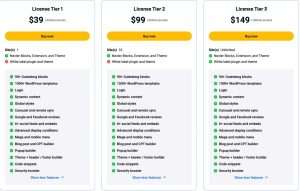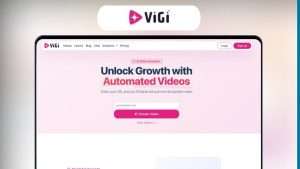Creating an effective autoresponder is crucial for any email marketing strategy, and GetResponse offers a powerful platform to help you achieve that. In this comprehensive guide, I will walk you through how to build a GetResponse autoresponder step-by-step, ensuring you understand each aspect of the process. Whether you're a beginner or have some experience in email marketing, this guide will provide you with actionable insights and tips to create an autoresponder that engages your audience and boosts conversions.

Source: www.getresponse.com
Email marketing is one of the most effective ways to connect with your audience, and an autoresponder is a key tool in this process. It helps you automate your email campaigns, sending timely messages to your subscribers based on their actions and preferences. By the end of this article, you will have a clear understanding of how to build a GetResponse autoresponder that not only meets but exceeds your marketing goals.
Why Use GetResponse for Your Autoresponder?
GetResponse is a leading email marketing platform that offers a range of features designed to help businesses automate their marketing efforts. Here are some reasons why you should consider using GetResponse for your autoresponder:
User-Friendly Interface: GetResponse has a clean and intuitive interface, making it easy for anyone to navigate and set up their autoresponder.
Advanced Automation Features: The platform offers powerful automation tools that allow you to create complex workflows based on user behavior.
Segmentation Options: GetResponse allows you to segment your audience based on various criteria, ensuring that you send the right message to the right people.
A/B Testing Capabilities: You can test different email versions to see which one performs better, helping you optimize your campaigns for maximum effectiveness.
Integrations: GetResponse integrates with a variety of other tools, making it easy to connect your email marketing with your existing systems.
Getting Started with GetResponse
Before you can build your autoresponder, you'll need to set up your GetResponse account. Here’s how to get started:
Sign Up for GetResponse: Go to the GetResponse website and sign up for an account. They offer a free trial, so you can explore the platform without any commitment.
Choose Your Plan: After the trial, you’ll need to choose a plan that fits your needs. GetResponse offers various pricing tiers based on the number of subscribers and features.
Set Up Your Profile: Once you’re logged in, complete your profile by adding your business information and connecting your domain.
Import Your Contacts: If you have an existing email list, you can easily import your contacts into GetResponse. Make sure to comply with GDPR regulations if you are in Europe.
Step-by-Step Guide to Building Your GetResponse Autoresponder
Now that your account is set up, it’s time to build your autoresponder. Follow these steps for a successful setup.
Step 1: Create a New Autoresponder Campaign
Navigate to the Autoresponders Section: In your GetResponse dashboard, click on the “Automation” tab.
Select “Create Autoresponder”: Click the button to create a new autoresponder campaign.
Name Your Campaign: Choose a descriptive name for your autoresponder. This will help you identify it later.

Source: instapage.com
Step 2: Define Your Audience
Segment Your List: Decide who should receive your autoresponder emails. You can segment your audience based on demographics, behavior, or interests.
Create a New Segment: If necessary, create a new segment for your autoresponder. This helps ensure that your messages are targeted and relevant.
Step 3: Set Up Your Email Sequence
Choose Your Email Type: Decide whether you want to send a series of emails over time or a single email.
Craft Compelling Emails: Write engaging content for each email in your sequence. Use a friendly tone and make sure to include a clear call to action.
Schedule Your Emails: Determine when each email will be sent. You can choose to send emails immediately after a subscriber signs up, or you can set delays between emails.
Step 4: Personalize Your Emails
Use Personalization Tags: GetResponse allows you to personalize your emails by including the subscriber's name, location, or other details. This can significantly increase engagement.
Segment Further: Consider creating different emails for different segments of your audience. Tailoring your content increases the likelihood that your subscribers will find it relevant.
Step 5: Automate Your Workflow
Set Triggers: Define triggers that will send your emails automatically. For example, you might want to send a welcome email immediately after someone subscribes.
Create Conditional Logic: Use conditional logic to send different emails based on subscriber behavior. For instance, if a subscriber clicks a link in one of your emails, you might want to send them a follow-up email.
Test Your Automation: Before launching your autoresponder, test it to ensure everything works as intended. Send test emails to yourself or a colleague.

Source: www.getresponse.com
Step 6: Monitor and Optimize
Track Your Metrics: After launching your autoresponder, keep an eye on key metrics such as open rates, click-through rates, and conversion rates.
A/B Test Your Emails: Experiment with different subject lines, content, and send times to see what resonates best with your audience.
Make Adjustments: Based on your data, make necessary adjustments to your emails. Continuous optimization is key to a successful autoresponder.
Common Challenges and Solutions
Building a GetResponse autoresponder can come with its challenges. Here are some common problems and how to overcome them:
Problem 1: Low Open Rates
Solution: Improve your subject lines. Make them catchy and relevant to your audience. A/B test different subject lines to see which ones perform better.
Problem 2: High Unsubscribe Rates
Solution: Ensure your content is valuable and relevant. If subscribers feel they’re not getting what they signed up for, they’re likely to unsubscribe.
Problem 3: Deliverability Issues
Solution: Ensure your emails are compliant with email marketing laws. Use a verified domain and avoid spammy language in your emails to improve deliverability.
Frequently Asked Questions About How to Build GetResponse Autoresponder
What is an autoresponder in GetResponse?
An autoresponder in GetResponse is a feature that allows you to send automated emails to your subscribers based on specific triggers, such as signing up for your newsletter or clicking a link in an email.
How do I create an autoresponder in GetResponse?
To create an autoresponder, log into your GetResponse account, navigate to the Automation tab, and select “Create Autoresponder.” Follow the prompts to set up your email sequence, audience segments, and triggers.
Can I personalize my autoresponder emails?
Yes, GetResponse allows you to use personalization tags to include subscriber information such as their name or location in your emails, making your messages more engaging.
How can I improve my autoresponder's open rates?
To improve open rates, focus on crafting compelling subject lines, segmenting your audience for more targeted messaging, and ensuring your emails are sent at optimal times.
What metrics should I track for my autoresponder?
Key metrics to track include open rates, click-through rates, conversion rates, and unsubscribe rates. Monitoring these will help you understand how well your autoresponder is performing.
Conclusion
Building a GetResponse autoresponder can significantly enhance your email marketing efforts. By following the steps outlined in this guide, you can create a powerful autoresponder that engages your audience and drives conversions. Remember to continuously monitor your performance and optimize your emails for the best results.
I encourage you to take action now—set up your GetResponse account and start building your autoresponder today. The sooner you get started, the sooner you can reap the benefits of automated email marketing. For more tips and resources, feel free to explore additional content on my blog, subscribe for updates, or leave a comment below with your thoughts!
Watch This Video on How to build GetResponse autoresponder







